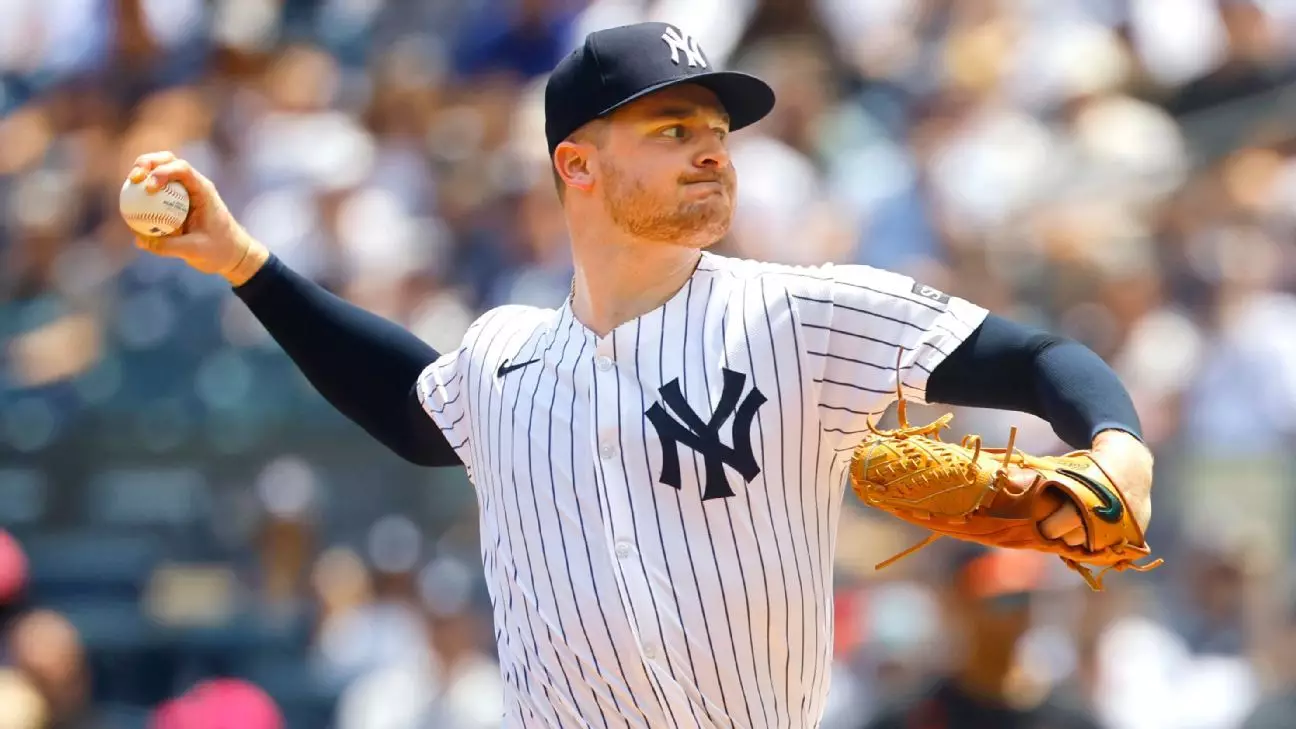The recent announcement regarding Clarke Schmidt’s potential Tommy John surgery signals more than just a scheduled medical procedure—it exposes critical vulnerabilities within the Yankees’ pitching staff. When a talented young pitcher, who has shown promise in limited appearances, faces such a severe injury, it serves as a stark reminder of the fragile nature of a team’s success reliant on health and depth. Schmidt’s injury is not simply a personal setback; it is a reflection of broader issues in roster resilience and strategic planning. The Yankees, long celebrated for their powerhouse lineup, now find themselves grappling with a pitching crisis that threatens to undermine their postseason aspirations.
The significance of losing Schmidt extends beyond his individual performance. He signaled potential as a reliable middle-rotation arm, someone capable of delivering quality starts and providing much-needed innings. His 3.32 ERA over 14 starts this season demonstrated his steady growth and ability to fill gaps in the rotation. A return to full strength after surgery is uncertain, and the long recovery period underscores the perils of putting too much faith in a thin pitching pipeline. The injury exposes the Yankees’ vulnerability: they are increasingly dependent on aging or unproven arms, which amplifies risks in a league where starting pitchers are going down with alarming frequency.
The Broader Impact on the Yankees’ Franchise and Future Strategy
This injury isn’t just an isolated incident but a symptom of systemic issues plaguing the team’s pitching development and roster management. The Yankees’ rotation has been hit hard—Gerrit Cole’s Tommy John surgery, Luis Gil’s injuries, and Ryan Yarbrough’s oblique strain collectively highlight a pattern of instability. The front office’s failure to sufficiently fortify the starting staff, whether through internal development or strategic trades, now forces them into a defensive posture. With the July trade deadline approaching, their options will determine whether they can salvage this season or face continued struggles.
The reliance on internal options like Carlos Carrasco, Allan Winans, and rookie Cam Schlittler carries significant uncertainty. Unlike established veterans or proven prospects, these choices lack the consistency and experience necessary to sustain a winning streak over the course of a grueling schedule. Boone’s decision to keep JT Brubaker in a bullpen role further underscores a lack of depth, compelling the team to explore the free-agent market or trade assets aggressively. The Yankees’ front office must become more proactive in addressing systemic weaknesses if they hope to contend against increasingly stacked rivals.
Analyzing the Bigger Picture: Confidence, Resilience, and Future Challenges
What this injury reveals isn’t just a setback—but a test of resilience for the Yankees organization. Can they adapt quickly and find effective replacements? The succession plans look shaky. Schmidt’s injury and recovery will likely consume significant focus and resources, leaving the team vulnerable in other phases of their season. It exposes a fragility that could ripple into the clubhouse culture, affecting player confidence and the strategic execution of pitching staff management.
Furthermore, Schmidt’s case may also reflect a deeper issue: the reliance on aggressive pitching schedules and insufficient injury prevention strategies. His previous Tommy John surgery in 2017 didn’t prevent him from becoming a mid-rotation fixture, but history suggests that such injuries often recur under the relentless schedules of Major League Baseball. The Yankees must confront whether their training, workload management, and medical support systems are robust enough to prevent future crises, or if they are continuously gambling with careers and seasons.
In essence, Schmidt’s injury doesn’t only threaten a season—it challenges the Yankees’ long-term approach to roster construction and player health. If the team is to fully realize its championship potential, it must prioritize building a sustainable pipeline of reliable pitchers and adopting a holistic approach that safeguards health alongside performance. Only then can they hope to withstand unforeseen setbacks and build consistency that transcends temporary fixes, forging a resilient core capable of winning in today’s competitive landscape.


Leave a Reply